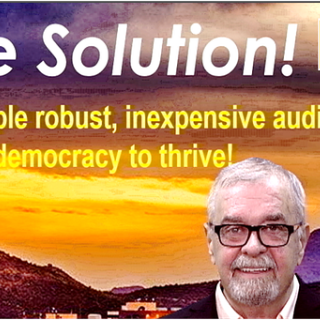Advertisement
Be careful what you wish for, as the City and Neighbors 4 More Neighbors push for more urban density
In what arguably is the Midwest’s largest boomtown, City of Columbus leadership and the grassroots effort “Neighbors 4 More Neighbors” have been seeking greater housing density for Columbus’s downtown and nearby neighborhoods, such as the Short North.
Just this week City Council unanimously passed a zoning change which could lead to 800 more apartments inside the popular Scioto Audubon Metro Park.
Those pushing greater density – such as Neighbors 4 More Neighbors or “N4MN” – are adamant this is the path Columbus needs to take. You can put the downtowns of Cincinnati and Cleveland in Columbus’s downtown in square miles, they say.
What’s more, says N4MN, Columbus and Central Ohio has sprawled so far, so fast, its straining resources and government services, to maintain roads, add water lines and provide public transit, etc.
Greater density has also become policy, as Mayor Ginther and City Council in June announced the Columbus Housing Strategy with a core effort “to build more housing at all price points region-wide.” Part of this plan includes a $200 million affordable housing bond on November’s ballot.
But is the Columbus Housing Strategy and its affordable housing bond too little too late? The last affordable housing bond package, $50 million passed in 2019, has already been depleted, say housing advocates.
Many have argued the City and high-end developers have blindly and selfishly been seeking greater density for far too long, and at a significant cost to the entire community, because too much of what has been built is too expensive for the majority.
No doubt, high-end apartment complexes – spurred on by tax abatements – have spiked the market rate, and now Columbus is staring an affordable housing crisis in the face.
“The market rate high density being constructed in Columbus is exacerbating economically and socially segregated neighborhoods for the benefit of supporting the employee needs of corporate Columbus and our longtime established institutions,” said progressive activist and mayoral candidate Joe Motil.
Density advocates believe more housing, or increasing supply, will put pressure on landlords to decrease the cost of housing. But Motil says even so-called housing crisis experts claim it may take 10 to 15 years for Columbus supply to catch up with demand, if ever.
“Developers love density because they can pack in as many units as possible in a smaller space, with very little square footage per unit, and make more money. And as far as I am concerned, density actually makes housing less affordable,” he says.
The debate over greater density in Columbus is spread across the ideological map, as some progressives and academics are firmly in the camp seeking greater density.
“Overcrowding is not an issue now,” stated Ohio State professor Harvey Miller, director of OSU’s Center for Urban and Regional Analysis (CURA), in a Facebook post to the Free Press. “Historically, central city neighborhoods had much higher population densities than they do now. But back then more people were crammed into the small houses. Today, denser development allows more people to live in the central city without overcrowding. And the High Street corridor is where we want it because it can be easily served by public transit.”
Miller and others have suggested denser development can succeed in Columbus, if for instance, the community leaves their cars behind for public transit or even bicycles. But others argue this is a pipe dream because “Car is King” in Central Ohio.
“Unfortunately, here in Columbus even though there are more and more high-density apartments than ever, the bus stops are rarely occupied by more than a handful people using our mediocre transit system,” said Motil.
Nonetheless, Columbus’s N4MN, which is part of a national effort, is determined to spread their message that greater supply is needed and needed asap.
“Central Ohio has been underbuilding housing for the past 10 years. From 2010 to 2018, the region added three new residents for every new housing unit built. We are projected to add one million people by 2050,” states their website. “We must continue building so that housing is an abundant resource rather than a scare commodity.”
Mindy Justis owns a condo near the top of the LeVeque Tower and is a founder of N4MN Columbus.
“How we got started was, a number of us were having a conversation. People who are pretty active in the community. We were saying that there are some really simple things that can be done to improve the supply of housing. Because that’s the dorky-level nerd conversation we were having about our own personal concerns about housing supply,” says Justis.
Essentially, she says, their mission can be summed up as such: “We are more about good urbanism. Caring about our city.”
“We are a group of neighbors, who believe, that there are a lot of people that are the silent majority that really agree with the concept of finding away a grow. We are growing, they are coming, let’s figure it out,” she says.
So, more density is a key component to make Columbus thrive in the near future and in 2050?
“More density, yes, basically. But building smarter,” she says.
Justis says “supply matters”, but it isn’t the only thing. N4MN is about the “three S’s”: Supply, Stability and Subsidization or Subsidizing.
“A portion which drives up cost or keeps cost at where it is, is because there’s not enough supply,” she says. “But when you build a lot, you may not have stability. People may still be experiencing housing issues, and the market place may not be able to take care of that. Therefore, you need subsidization, or government intervention. Subsidization really does matter. Government intervention supports the least of us so that opportunities arise for them.”
Justis says N4MN is working arm-an-arm with affordable housing advocates.
“We are not asking everyone in German Village to agree to put up a low-income or mixed-income housing unit next door to them. We are telling them, though, in real terms, when you argue for two years about taking a vacant site and adding 300 units to it, you are stymieing supply,” she says.
“When you have an empty parking lot that’s been sitting there for two years and not doing any good. That 300 units, plus this is happening with 20 to 30 other projects around the area, in total, will not make my rent go down, but has a greater chance of going up because there’s less supply. You really start to impact your neighbor who is two miles down the road.”
There are whispers from some that N4MN is in bed with developers who are salivating at this belief, this theorized need for greater density. Indeed, smaller and smaller apartments stacked high in a hip urban core is a skies-the-limit gold mine.
“They do generally support us. But we are very clear to them we are not here to defend whatever they do,” she says. “We will hear them out, but we are not here to do their bidding.”
Joe Motil believes N4MN may have good intentions but be careful what you wish for.
“What is especially true here in Columbus is that high density housing equates to more market rate housing that serves as the middle-high-income white-collar labor pool for corporate Columbus and big business,” he said. “And corporate Columbus’s offices and institutions are primarily located in or very close to the desirable urban areas of Columbus where low-moderate income individuals and families cannot afford to live. And those low-moderate income residents who have lived in these urban neighborhoods, along with other long-term homeowners who cannot afford to pay escalating property taxes on their fixed incomes, are driven out due to greedy landlords who raise rents with no reason other than for profit.”



